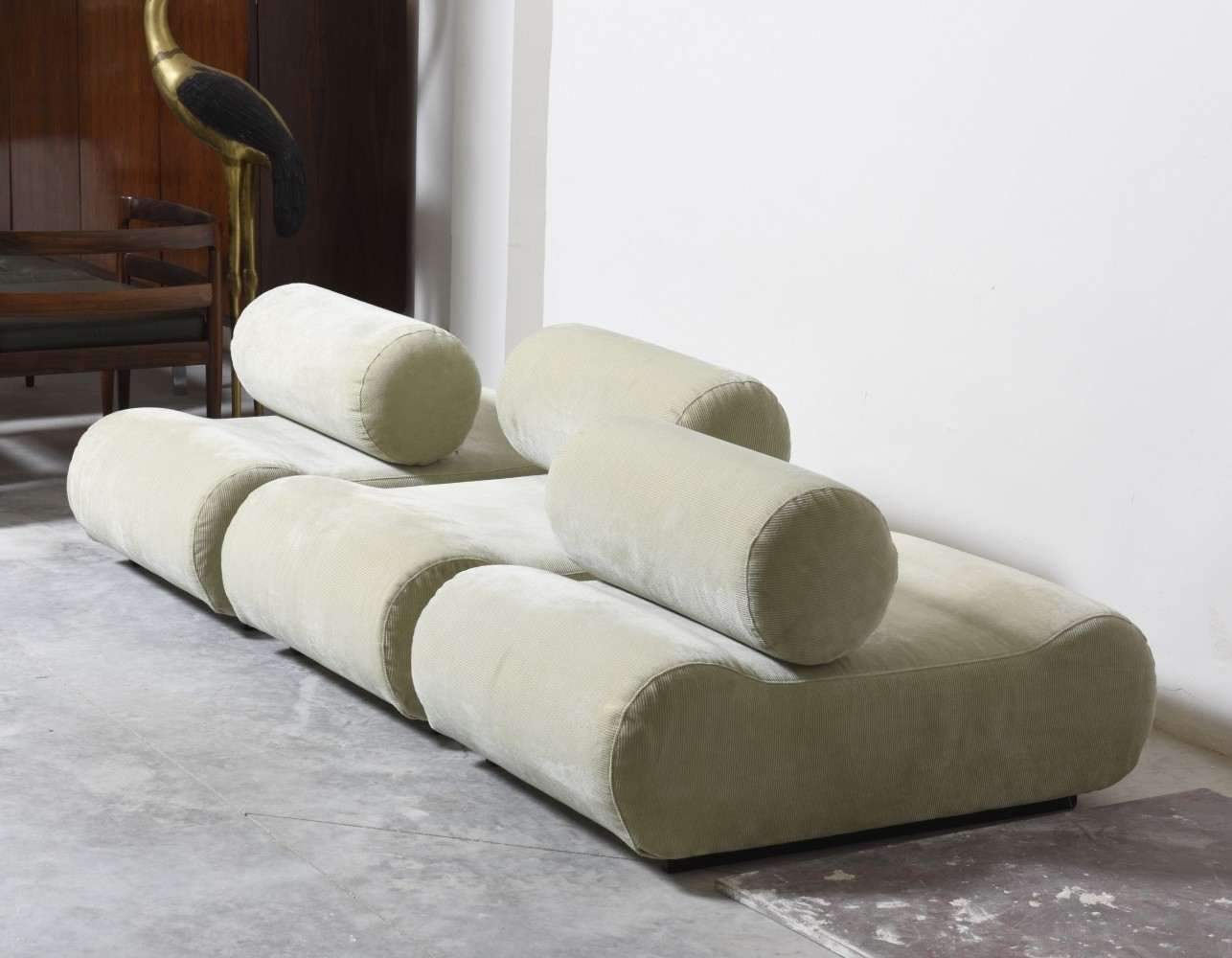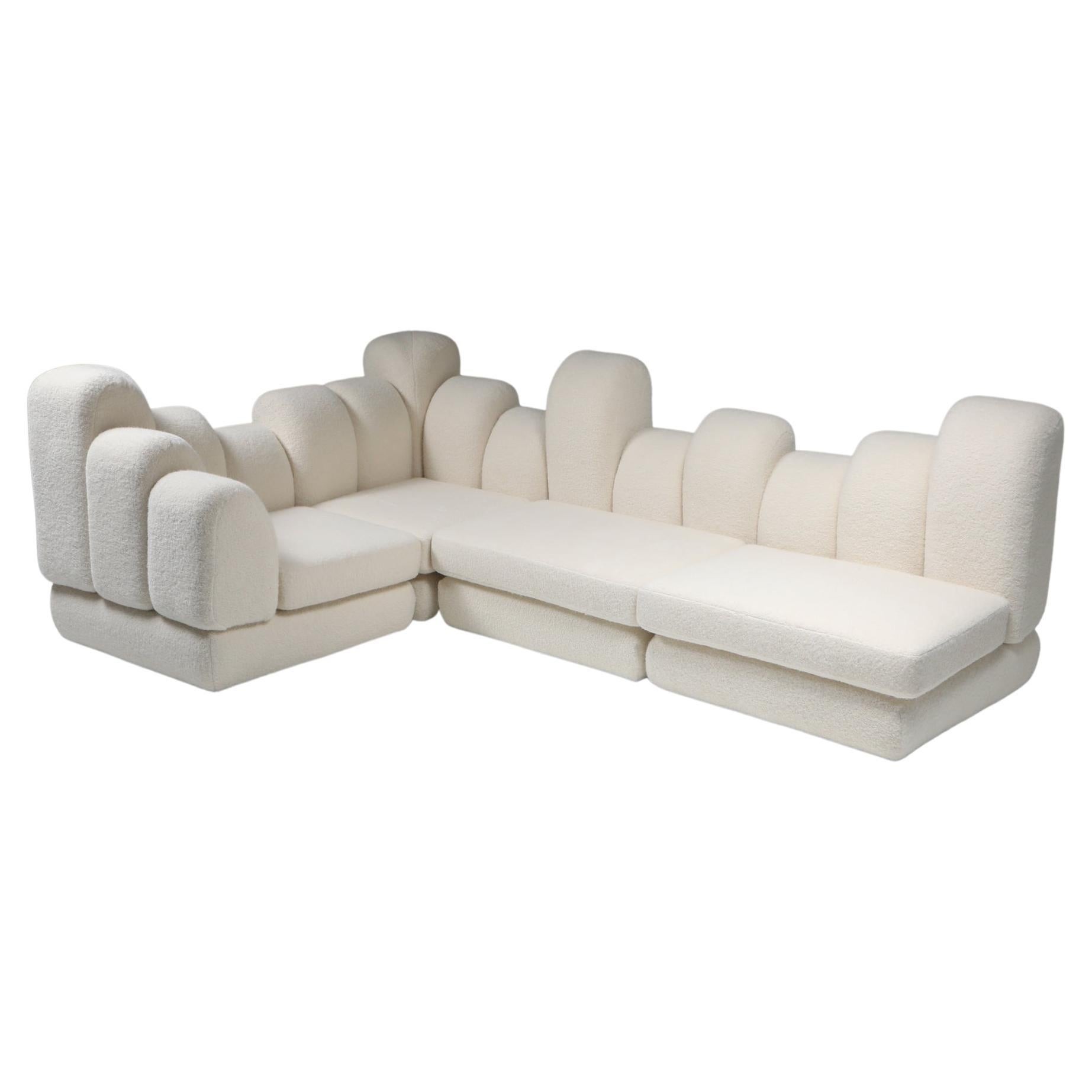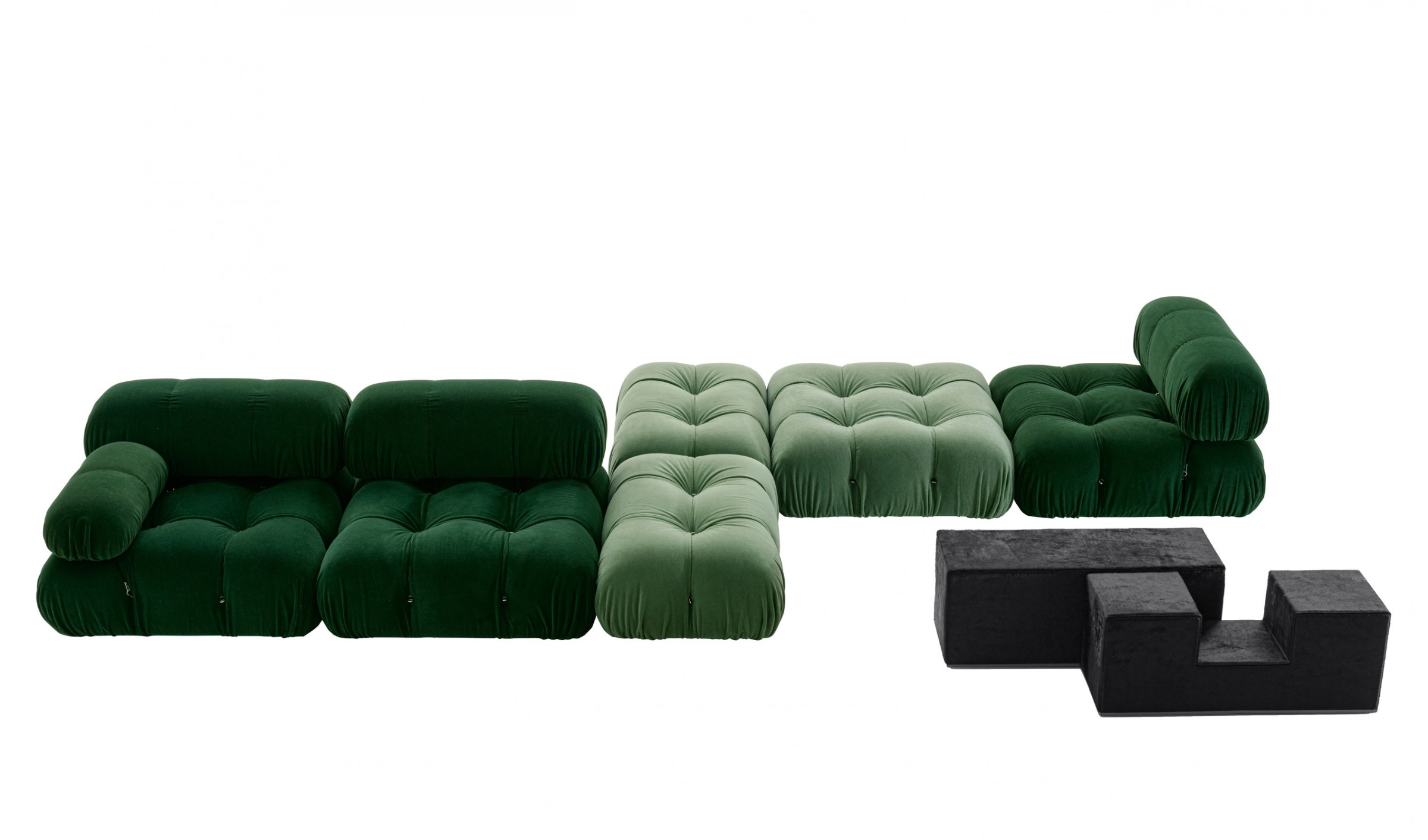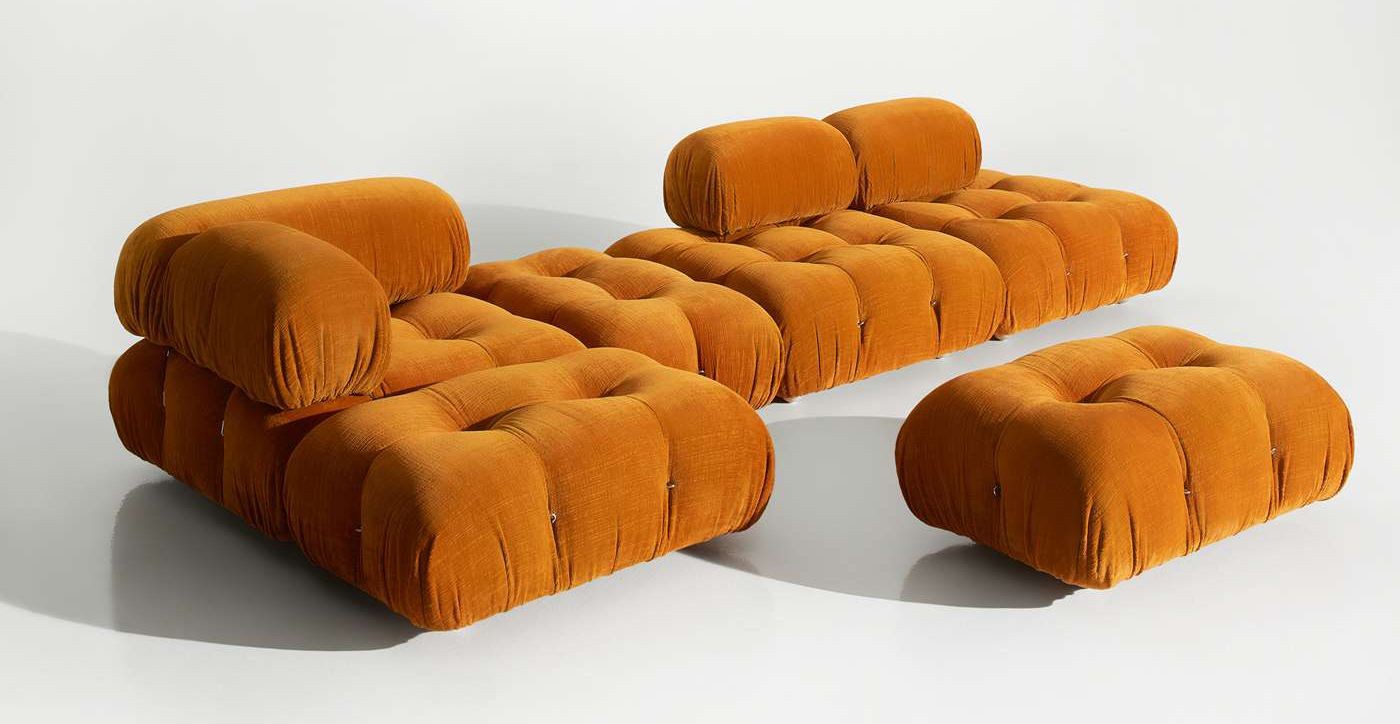10 καναπέδες που άφησαν εποχή
DS.WRITER:
Vasilis Xifaras
Κεντρική εικόνα: Mario Bellini Architects, B&B Italia
Ο καναπές είναι κάτι παραπάνω από ένα χρήσιμο έπιπλο, είναι ένα από τα βασικά «συστατικά» που απαρτίζουν έναν χώρο, είτε πρόκειται για ιδιωτικό είτε για δημόσιο. Είναι ένα σύστημα που υποστηρίζει πληθώρα λειτουργιών, ενώ, με τον κατάλληλο σχεδιασμό, μπορεί να προωθείται η ατομικότητα ή η ομαδικότητα, η άνεση ή η δημιουργία εντυπωσιακής ατμόσφαιρας. Σήμερα, επιλέξαμε να σας παρουσιάσουμε μερικά από τα αγαπημένα μας σχέδια του 20ού αιώνα που άφησαν το στίγμα τους στην ιστορία του design.
Diwan (Divan) – Franz West, 1991
Με πληθώρα αντισυμβατικών γλυπτικών έργων, κολάζ αλλά και επίπλων, ο Franz West δοκίμαζε τα όρια του κάθε αντικειμένου και πειραματιζόταν με τον τρόπο που αλληλεπιδρά ο άνθρωπος με αυτό. Οι δημιουργίες του εστιάζουν, εκτός από την αισθητική, στην αίσθηση της αφής αλλά και τη λειτουργικότητα, ή μάλλον καλύτερα στον τρόπο με τον οποίο καθίσταται κάτι λειτουργικό. Ο καναπές «Diwan» αποτελείται από έναν λεπτό χαλύβδινο σκελετό και λινά υφάσματα, τα οποία, όντας τεντωμένα, μοιάζουν σα να έχουν στερεοποιηθεί, κάτι που παραπέμπει στα παλαιότερα έργα τέχνης του West, κατασκευασμένα από papier mâché ή γύψο.

Photo by: David Zwirner gallery
Day Bed - Eileen Gray, 1925
Μέσα σε έναν ανδροκρατούμενο κόσμο (ακόμα και στο design), το ταλέντο της Ιρλανδής σχεδιάστριας και αρχιτεκτόνισσας Eileen Gray έγινε ξακουστό μόλις μετά τον θάνατό της, το 1976. Πλέον, πολλά από τα έπιπλα που σχεδίασε δημοπρατούνται προς εκατομμύρια ευρώ. Ένα από τα πιο γνωστά της δημιουργήματα είναι η κατοικία E1027, ένα κλασικό δείγμα μοντέρνας αρχιτεκτονικής που ζήλευε (και είχε βανδαλίσει) ο Le Corbusier. Η ίδια σχεδίασε όλα τα έπιπλα για το εσωτερικό, και μεταξύ αυτών τον καναπέ «Day Bed», φτιαγμένο έτσι ώστε ο χρήστης να μπορεί να κοιτάξει οπουδήποτε, με τη δυνατότητα συνδυασμού χαλάρωσης – ύπνου.

Photo by: Eileen Gray, Architonic
DS–1025 – Ubald Klug για το De Sede, 1973
Ο Ubald Klug ήταν Ελβετός σχεδιαστής και αρχιτέκτονας εσωτερικών χώρων, με σπουδές στο Kunstgewerbeschule. Κατά τη διάρκεια της καριέρας του βρέθηκε κοντά σε γλύπτες, αρχιτέκτονες και καλλιτέχνες, κάτι που αποτυπώθηκε στα έπιπλα, υφάσματα, κεραμικά και γυάλινα αντικείμενα που δημιούργησε. Ο καναπές «DS–1025», γνωστός και ως «Terrazza Sofa», αντλεί έμπνευση από τις αναβαθμίδες ή πεζούλες που συναντώνται σε ορεινές πλαγιές. Η τυπολογία του design είναι τέτοια, ώστε να επιτρέπει τη διαμόρφωση διαφορετικών συνθέσεων με τον συνδυασμό κάθε μονάδας του καναπέ. Η κατασκευή του αποτελεί χαρακτηριστικό δείγμα της ελβετικής χειροτεχνίας στα τέλη του 20ού αιώνα, ενώ κάθε κομμάτι αποτελείται από δέρμα υψηλής ποιότητας σε διαφορετικούς χρωματισμούς.

Photo by: De Sede
Corbi Modular Seating System – Klaus Uredat για το COR, 1969
Με εμφανείς αναφορές στη γλυπτική, αυτό το σύστημα καθιστικού δομείται από δύο αντικείμενα, τα οποία μπορούν είτε να συνυπάρξουν είτε να σταθούν σε έναν χώρο αυτόνομα. Με διαφορετικούς συνδυασμούς μπορούν να «κατασκευάσουν» έναν καναπέ, ένα κρεβάτι ή τρία διαφορετικά καθίσματα. Η minimal γεωμετρία, που αναδεικνύεται από το ανοιχτό χρώμα του υφάσματος, εντείνει την απαλή υφή του «Corbi» και τη γενικότερη αίσθηση άνεσης. Αυτό το καθιστικό παράχθηκε σε μικρή κλίμακα από το 1972 ως το 1974, επομένως όποιος το έχει στην κατοχή του είναι πολύ τυχερός!

Photo by: Vintage Design Marketplace
Dromedaire Sectional Sofa – Hanz Hopfer για το Roche Babois, 1974
Ένα από τα πιο δημοφιλή design καθιστικού, το «Mah Jong» (1971), έμεινε στην ιστορία διότι «έσπασε» τους κανόνες, δηλαδή το να διαθέτει ένα καθιστικό αυστηρή συμμετρία και βαριούς όγκους. Ο δημιουργός του, Hanz Hopfer, αντιμετώπιζε τα καθιστικά ως τοπία που μεταμορφώνονται συνεχώς. Αυτή η φράση χαρακτηρίζει πλήρως και το γωνιακό καθιστικό «Dromedaire», το οποίο διαθέτει μια πλάτη που αυξομειώνεται σε ύψος. Πρόκειται για έναν καναπέ – μονάδα, που αν ενωθεί με την ίδια μονάδα σε διαφορετικό προσανατολισμό δημιουργεί μια «αγκαλιά», ένα ιδιαίτερα ευρύχωρο καθιστικό που καλύπτεται από μάλλινες επιφάνειες.

Photo by: 1stdibs.com
Soriana Sofa – Afra and Tobia Scarpa για το Cassina, 1969
Το ζευγάρι αρχιτεκτόνων της Afra και του Tobia Scarpa διέπρεψε στον τομέα του industrial design στην Ιταλία, με έμφαση στην τεχνογνωσία και την αισθητική των υλικών που χρησιμοποιούσαν, και εμφανείς επιρροές από τον πατέρα του Tobia, τον Carlo Scarpa. Ο καναπές «Soriana» προέκυψε μετά από τους πρώτους πειραματισμούς των σχεδιαστών με τον αφρό πολυουρεθάνης, δημιουργώντας έναν αντισυμβατικό -για την εποχή- καναπέ, που δίνει έμφαση στη χαλάρωση και την άνεση. Χαρακτηριστικός για τις απαλές καμπύλες του, ο καναπές βασίζεται σε ένα εμφανές πλέγμα από σύρμα για να διατηρούνται τα μαξιλάρια του καθίσματος στη θέση τους, στοιχείο το οποίο παραπέμπει στη λεγόμενη αλήθεια της κατασκευής, μια θεμελιώδη θεώρηση της μοντέρνας αρχιτεκτονικής.

Photo by: Cassina
Serpentine Sofa – Vladimir Kagan για το Directional, 1950
Ο σχεδιαστής μοντέρνων επίπλων Vladimir Kagan, έγινε γρήγορα ανάρπαστος από τους νεαρούς κατοίκους των Αμερικανικών πόλεων, λόγω του δυναμισμού, της ασυμμετρίας αλλά και της άνεσης που αποπνέουν τα σχέδιά του. Εξάλλου, ο ίδιος πίστευε στο ρητό «form follows function» και αποστρεφόταν τη μαζική παραγωγή. Ενώ ο καναπές «Serpentine» ήταν από τις πρώτες δημιουργίες του, η επιτυχία του κατάφερε να καταστήσει τον Kagan ως ένα σημαντικό όνομα στον παγκόσμιο χώρο του design. Πρόκειται για μια δημιουργία που κατέρριψε τις νόρμες των καθιστικών: χωρίς ορθοκανονικά σχήματα, ο οργανικός καναπές σε σχήμα «S» απομακρύνεται από τον τοίχο και τοποθετείται στο κέντρο ενός χώρου. Έτσι, οι άνθρωποι έρχονται κοντά και μπορούν να θαυμάσουν τα έργα τέχνης γύρω τους.

Photo by: Vladimir Kagan
Togo – Michel Ducaroy για το Ligne Roset, 1973
Είναι ένα από τα πιο επιτυχημένα σχέδια στην ιστορία του επίπλου, και η έμπνευση αυτού προέκυψε από κάτι πολύ απλό: το αλουμινένιο σωληνάριο οδοντόκρεμας. Ο Michel Ducaroy, με σπουδές στην Ecole Nationale des Beaux Arts της Λυών, λάνσαρε δεκάδες έπιπλα για το σπίτι κατά τις δεκαετίες 1960 και 1970, με τη διάδοση νέων υλικών, όπως πλαστικών και αφρών. Το καθιστικό «Togo» διαθέτει εργονομικό σχεδιασμό, με μια καμπύλη μορφή και μια απαλή εσωτερική δομή που προσφέρουν στιγμές ξεγνοιασιάς. Πρόκειται για ένα ανάρπαστο design object, με πολλές απομιμήσεις να κυκλοφορούν σε παγκόσμια κλίμακα.

Photo by: Ligne Roset
DS–600 - Ueli Berger, Eleonore Peduzzi Riva, Heinz Ulrich, Klaus Vogt για το De Sede, 1972
Πρόκειται για ακόμα έναν καναπέ που αποτελείται από επιμέρους μονάδες, που, με τη διαφορετική κάθε φορά επανάληψή τους, μπορούν να δημιουργήσουν διαφορετικές συνθέσεις. Για αυτό τον λόγο, ο καναπές «DS-600» έγινε γνωστός και ως ο ατελείωτος καναπές, ενώ το σχήμα του (που παραπέμπει στο φίδι) είναι μια αναφορά στο Tatzelwurm, ένα μυθικό πλάσμα των Άλπεων. Το κάθε στοιχείο με επένδυση δέρματος μπορεί να ενωθεί με το επόμενο, μέσω ενός αρθρωτού μηχανισμού με φερμουάρ. Πρόκειται για ένα σχέδιο – επιτομή του modular design, που αποδείχθηκε μεγάλη επιρροή για τους μοντέρνους αρχιτέκτονες και σχεδιαστές.

Photo by: De Sede
Camaleonda – Mario Bellini, 1970
Ο Mario Bellini, Ιταλός αρχιτέκτονας και σχεδιαστής αντικειμένων, επίπλων και εκθέσεων, έχει συνεργαστεί με τις μεγαλύτερες εταιρείες, υλοποιώντας επιτυχημένα designs που ανταποκρίνονται στην τεχνολογία της κάθε εποχής. Ένα τέτοιο έπιπλο, ο καναπές «Χαμαιλέοντας», προσαρμόζεται σε κάθε χώρο, με τις άπειρες δυνατότητες που προσφέρει μέσω του modular συστήματός του. Το «φουσκωτό» κάθισμα αποτελείται από πολυουρεθάνη, και εξωτερικά έχει επιλεγεί το διαχρονικό μοτίβο του capitonné, ενώ ένα σύστημα από καλώδια και γάντζους επιτρέπει τη σύνδεση με άλλες μονάδες, αλλά και με τα εξαρτήματα που χρησιμεύουν ως μπράτσο ή πλάτη του καναπέ.





